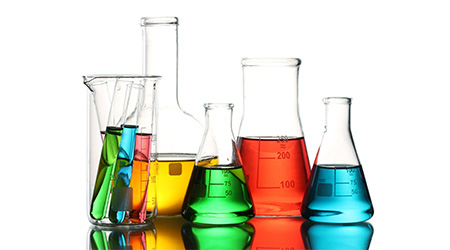
COVID-19 has created a "we've got to kill everything state of mind," says Bill Fellows, owner of Fellows Custodial Consulting LLC, Hermitage, Tennessee. But experts agree that getting back to basics presents a better remedy for the coronavirus.
Science has shown that plain soap and water will kill the COVID-19 virus; it doesn't need a sanitizer or a disinfectant, but other germs do. The key is to select the right product — cleaner, disinfectant or sanitizer — for the microorganisms departments face, the threat level, method of transmission, the type of facility, type of surfaces, how frequently the surfaces are touched, etc. Follow that up by using the products correctly to clean, sanitize and disinfect surfaces.
What's the Difference?
Not all custodial staffs understand the difference between cleaners, sanitizers and disinfectants, which can lead to poor product selection and misuse, adds Fellows. Regular cleaning agents — whether liquid, powders, sprays or granules — remove dirt, dust, debris and odors from surfaces. These products might make surfaces look good, but they do not stop the spread of disease.
Put simply, conventional cleaners do not kill germs. Instead, they physically remove soils and pathogens from surfaces.
The act of cleaning should be the first step in every cleaning and disinfecting routine. In this two-step process, custodians first use a cleaner to remove particulates from the surface. After that, disinfectants can be used to kill the microorganisms that are left behind.
"Sometimes custodians skip cleaning and go straight to disinfecting, to do it all in one step," says Fellows. "But the recommended method is to clean a surface first, then apply a sanitizer or disinfectant. Allow the surface to remain wet for the stated dwell/contact time, and then rinse — if needed."
Darrel Hicks, a St. Louis-based expert in the field of infection prevention as it relates to cleaning, warns that one-step disinfecting violates approved uses listed on the label.
"The Environmental Protection Agency (EPA) and Centers for Disease Control and Prevention both advise applying a disinfectant to a pre-cleaned surface," he says.
Knowing when to apply chemicals is just as important as which chemicals you use. Choosing between sanitizers and disinfectants requires an understanding of the differences between the two, as the EPA regulates both products. Sanitizers reduce bacteria on a surface by at least 99.9 percent — a level considered safe by public health codes, while disinfectants kill a wider range of bacteria, mold, mildew, and viruses with 99.999 percent success.
According to Fellows, sanitizing is all that's required in most cases. Sanitizers work well in daycares, restaurants and barber shops. But in environments where more virulent microorganisms are present — such as hospitals, long-term care facilities, doctor's offices or emergency rooms — disinfectants work best.
Occupants or building executives may ask frontline staff to use disinfectants on everything, according to Mike Sawchuk, a consultant and coach for the professional cleaning industry based in St. Catharines, Ontario, Canada. Frequencies, however, should be determined by the facility type and traffic.
"If you're doing proper cleaning, you should only disinfect as threat levels dictate it's needed," says Sawchuk.
He recommends targeted hygiene, wherein disinfecting occurs before and after instances of high traffic. In a school, for example, custodians would disinfect high-touch points before students arrive, then again after lunch and at the day's end.
Sawchuk adds in another consideration: sterilization, which has a 100 percent kill factor. This is reserved for operating rooms and other areas that demand a sterile environment.
Labels Key To Selecting Disinfectants

 The Down and Dirty on Cleaning in Virus Season
The Down and Dirty on Cleaning in Virus Season How Surfactant Use is Expanding in Commercial Cleaning
How Surfactant Use is Expanding in Commercial Cleaning Operational Excellence Series 2025: Better Budgeting
Operational Excellence Series 2025: Better Budgeting
